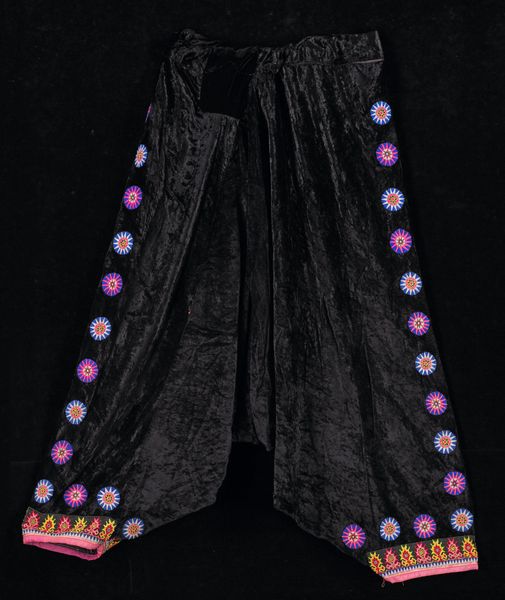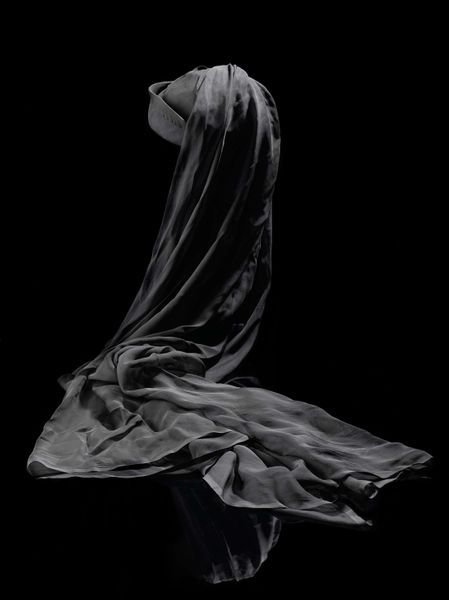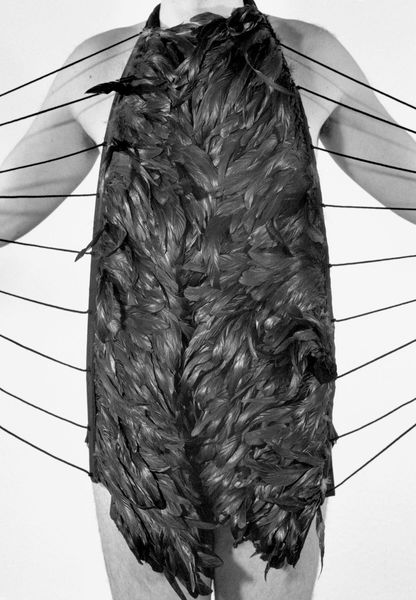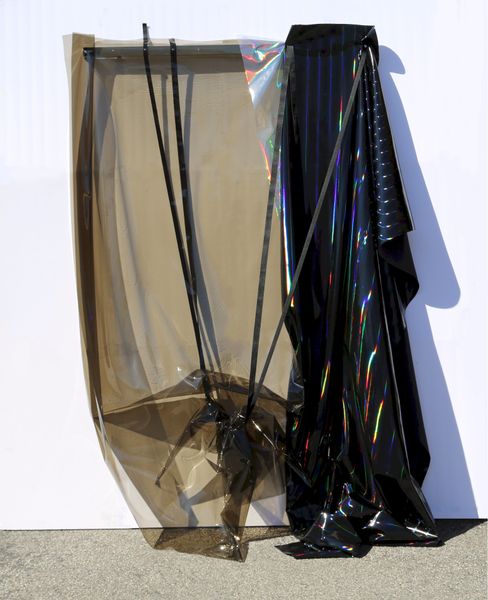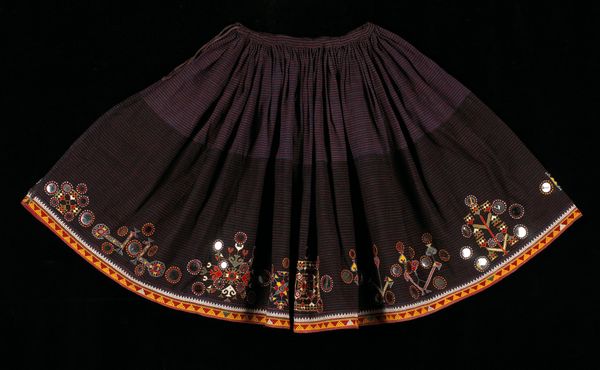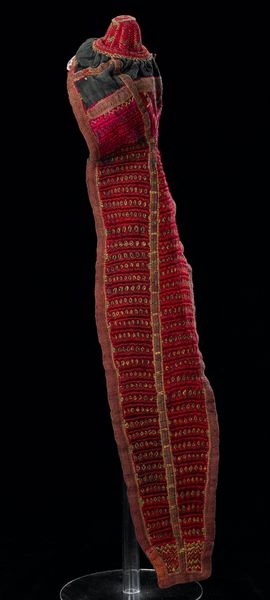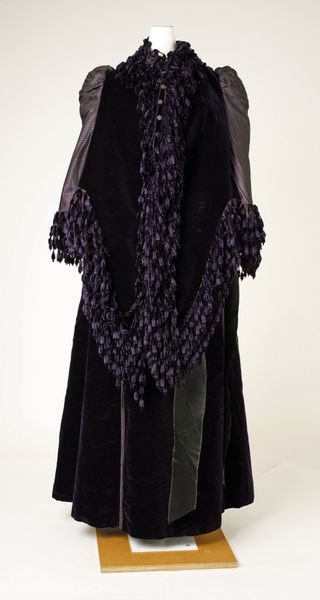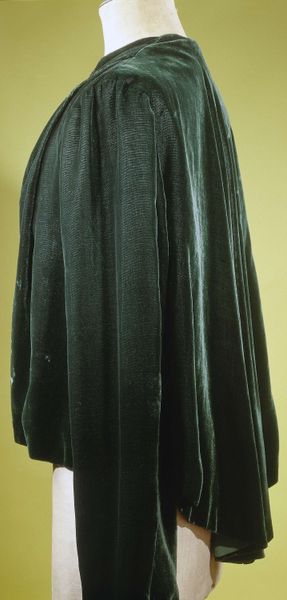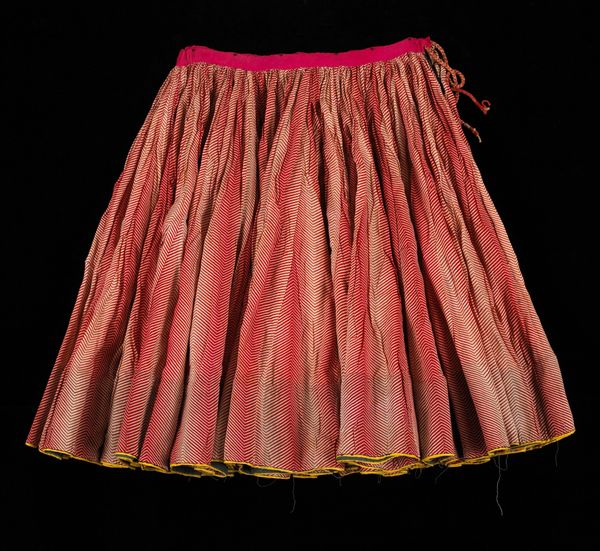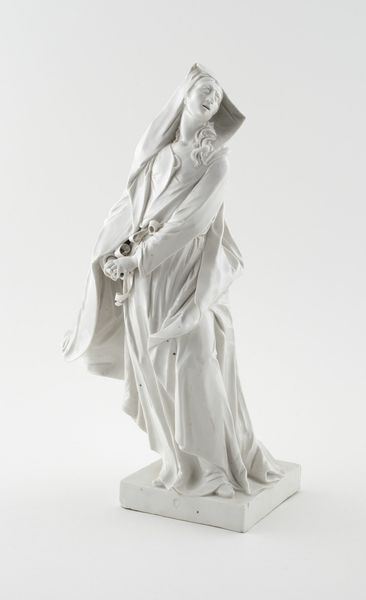
fibre-art, textile
#
fibre-art
#
contemporary
#
textile
#
abstraction
Dimensions: 43 1/4 x 53 in. (109.86 x 134.62 cm)
Copyright: Public Domain
Editor: Here we have "Shalvars," a textile piece created around 1960. The fabric is a vibrant emerald green, and the way it’s draped makes me think of flowing water, almost like a captured waterfall. What's your take on it? Curator: I see those associations, definitely. But for me, it goes beyond aesthetics. Shalwars are South Asian in origin, a traditional garment worn by women but also, importantly, by men in some regions. Placing this work in its historical context, particularly within mid-20th century Western art, what narratives are subtly being woven, considered or resisted here? Is it a symbol of cultural appropriation, perhaps a quiet subversion, or maybe an exploration of gender fluidity before such terminology fully entered the art historical lexicon? Editor: I hadn’t considered that. It's easy to see it as simply abstract, based on the texture and color alone. The garment-nature comparison is just on the surface. Curator: Exactly. Consider the time period – the 1960s, a time of great social and political upheaval. Textile arts were often relegated to "craft," marginalized, especially when created by women. Do you think presenting this piece as art, specifically highlighting its cultural origins, challenges these biases, elevating it beyond mere utility? Editor: It absolutely does. Highlighting the cultural context reframes our understanding, turning what might be seen as decorative into a powerful statement about identity and cultural exchange. Curator: And what could that statement be? How can we read this particular configuration and presentation as an active intervention, rather than simply a historical artefact? Editor: Now I'm thinking about its role in bridging cultures, or sparking a conversation about cultural representation. Thanks for providing this alternative lens! Curator: Precisely. It underscores how art can be a potent tool for exploring intersectional narratives and pushing for a deeper understanding of cultural identity.
Comments
No comments
Be the first to comment and join the conversation on the ultimate creative platform.
